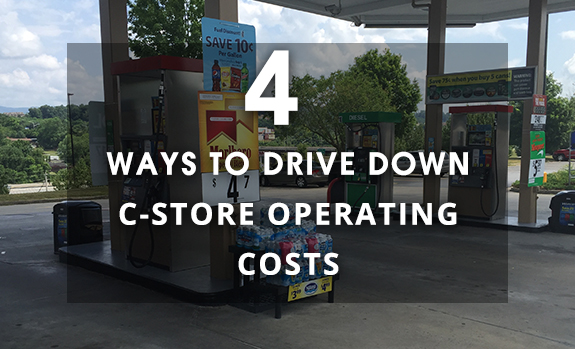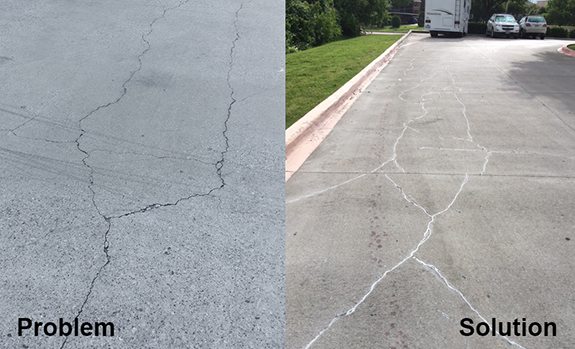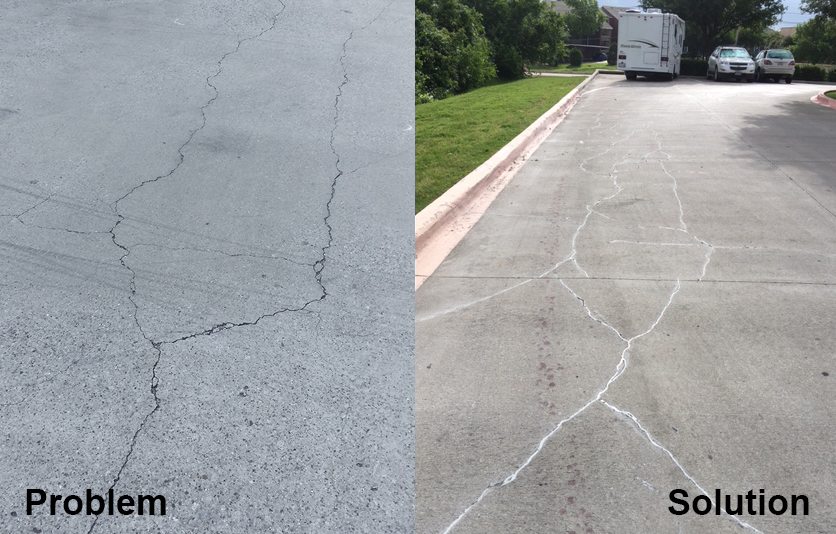

Save our Surfaces (SOS) Part II: Long-Term Solutions for Pavement Distress

As a facility manager, you have a lot on your plate and, in some cases, limited resources and budget available. So, when it comes to fixing areas of pavement distress, it may seem simpler to patch over a pothole than get to the bottom of it. This will only work temporarily, however, as it’s likely the holes will re-form, indicating a deeper issue.
The solution is to enlist the help of an outside expert who specializes in pavement and can focus on treating the cause of pavement distress and not just the defect itself. While it may cost a little more up front, the proper repair will help prevent issues from recurring, minimize liabilities, and reduce the time you have to spend worrying about your asphalt or concrete.
In our last post, we identified the top 10 causes of pavement distress. This week, we offer long-term solutions for those circumstances.
Pavement Distress – Problem & Solution:
- Lack of preventative maintenance – Perform regular pavement assessments to determine the right preventative procedure at the right time for a proactive (rather than reactive) strategy. A typical pavement management plan will include routine crack sealing, sealcoating, and lot marking. This can save $0.10-$0.30/SF per year over 10 years.
- Poor design – Note any problem areas on existing parking lots and tell your construction department so issues can be addressed (and prevented on any new sites). Prior to new or re-construction, consult with a local contractor or manufacturer to determine which materials will provide the best performance based on site-specific factors such as region, climate, and traffic load. Use proper materials applied to the proper depth and ensure the parking lot has adequate slope to avoid drainage problems.
- Insufficient drainage – Water is the #1 enemy of a parking lot. Supplement your drainage system by installing new catch basins in low-lying areas to properly collect water. Routinely inspect existing catch basins to keep drains clear of debris and to perform any adjustments or other maintenance.
- Weather-related issues – When performed at regular intervals, crack sealing is the best defense against weather-related issues such as excess rain and freeze-thaw cycles as it helps prevent water from seeping into the base and destroying the asphalt cement (the glue that holds pavement together).
- UV rays – Sealcoating fills surface voids and helps prevent oxidation (fading of pavement) due to excess sun exposure. Re-stripe over faded pavement markings.
- Heavy traffic loads – Routine crack routing and sealing is suggested in these areas, prior to sealcoating. Routing creates a deeper reservoir for sealer to fill and results in better adhesion; thus, providing longer protection for well-traveled areas of pavement.
- Excessive sprinkling – Water with supervision. And, periodically check the aim of your sprinkler heads and notice where the water drains. If sprinklers are causing water to deposit too close to the asphalt or concrete, re-aim or replace them.
- Salt or other dirt/debris – Crack sealing helps prevent the introduction of incompressible objects into cracks.
- Oil spots – Apply primer and then sealer to oil-contaminated areas. Sealcoating provides a protective barrier, minimizing the rate at which water and other irritants such as oil and gas can permeate the pavement.
- Snow plow damage – Plowing snow is far more effective and (and less destructive) without rough grooves or holes on the pavement. To achieve a smooth and even texture on your parking lot surface, apply sealer on a regular basis. Also, ensure your snow plow vendor is using the proper blades and clearly marked sticks to identify islands (this will help minimize potential damage to curbs).
For additional information or to discuss any of these services, please contact us. We are here to help you make better decisions concerning your parking lots.



